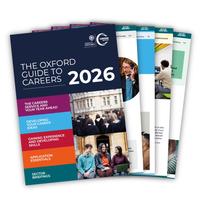Finding advertised work experience
Websites such as the Times 100 Graduate Employers, the Dots, Creative Pool and Creative Opportunities are great starting places when trying to see what roles and internships are available at the moment. However, these are not the only ways to find roles. To find other great experiences you’ll often have to be more proactive and contact individuals and organisations to enquire further. You’ll notice that many opportunities aren’t internships but competitions, events, awards and other ways to gather experience (e.g. the ‘creative briefs’ you might see on Hiive). Sign up for alerts and emails from sites like this (and also CareerConnect) to keep up with new opportunities as they emerge.
There are many unpaid experiences out there. Read advice from Creative Toolkit published by BECTU, the media and entertainment trade union. Even if you decide to take unpaid work, you should know the guidelines that are published to support National Minimum Wage legislation. To find out if you are entitled to be paid when undertaking work experience or an internship, visit the Government’s webpages on the National Minimum Wage.
10 tips to proactively build experience
- Get involved in groups, societies, shows and showcases in Oxford or your home region
- No society or group? Start one; outside ideas and feedback help you develop
- Research college alumni and industry figures who you could contact for advice or talks
- Speculatively contact organisations (see ‘Useful websites’) for experience opportunities
- Keep in contact with useful people that you meet (e.g. on LinkedIn)
- Tell people about what you do. “I am a _____” is a powerful phrase
- Volunteer to support other artists’ projects for insight and perhaps a favour in return
- Create some projects just for you which will help you develop your work
- Try to get press coverage/recording for your events, ask for permission to use it yourself
- Create an online presence for your work: use websites/blogs/social media/crowdsourcers: make sure it’s easy for anyone to know what you do, see examples and contact you
Getting a Job
Word of mouth
The Creative Skillset research survey found that 23% of those in the creative media sector found their first job through word of mouth, and so confidence connecting with people in the industry is vital. See our guide to networking, and develop your self-marketing online.
Website searching
Make sure to set up alerts and saved searches on a number of relevant opportunity websites (see our ‘External Resources’) section. Again, websites such as the Times 100 Graduate Employers, the Dots, Creative Pool and Creative Opportunities are great place to start. Also, Creative Access work with hundreds of partners across film, TV, the arts, theatre, museums, advertising, publishing and beyond and support thousands of individuals each year, from groups historically under-represented in the sector in terms of ethnicity, disability and lower socio-economic status, to access new careers and thrive in their existing ones.
You’ll see that a few websites, particularly ‘casting call’ sites and similar, charge applicants to apply to vacancies that are listed there. This is a reality of the industry, unfortunately, but you don’t need to sign up to all of them! Start with the free ones, and try ‘free trials’ on some others to decide if it’s worth it for you.
Bear in mind that vacancies are likely to attract high numbers of applicants, and your application materials will need to be competitive.
Creative CVs
CVs for the creative sector often look very different to a traditional CV, with a focus on providing opportunities to showcase your talent. See our resources for ‘Creative CVs’.
Freelancing and entrepreneurship
Often, creative professionals will find that they’re self-employed, invoicing other people for their work as they win opportunities/business. You may want to read our guides to Freelancing and Entrepreneurship to learn more.
Portfolio careers
Many in the sector take some form of other work which allows them to pursue their creative ambitions as well as providing some financial stability.
Consider what kind of supporting role(s) might:
- Allow you time to pursue your artistic ambitions
- Provide skills or networks that might help you in your work
- Be satisfying work, relating to your interests/skills/values
- Support your backup career plan





